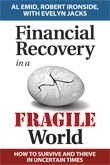Last updated: June 20 2012
Wanted: Innovation and human capital
Although Canada's economy has weathered recent global mayhem relatively well, Canadians aren't home free. If we are to sustain our standard of living, says the Organization for Economic Cooperation and Development (OECD) in its latest Economic Survey of Canada, Canada has to increase productivity. The report calls productivity growth Canada's "main long-term challenge.î
Over the past few decades, the OECD notes, the amount of labour, capital and natural resources needed to produce a unit of GDP has remained constant. Indeed, since 2002, Canada's overall productivity has fallen, while U.S productivity has grown by about 30%.
The OECD makes two recommendations: first, more support for business investment in research and development (R&D) and, second, improve quality and access to tertiary education to maintain the supply of highly skilled workers. The report notes Canada's business sector devotes only about 1% of GDP to R&D, compared with 2% in the U.S. and more than 2.5% in Japan, Korea and some of the Nordic countries.
Says Peter Jarrett, one of the authors of the study: "Canada is blessed with abundant natural resources. But it needs to do more to develop other sectors of the economy if it is to maintain a high level of employment and an equitable distribution of the fruits of growth.î
The OECD also takes note of Canada's rising real estate prices and high household indebtedness. There is certainly no escaping Canadians growing debt burden. In its June issue of Financial System Review, the Bank of Canada rated overextended Canadians as the country's greatest domestic risk. "The risks associated with high levels of household debt and a potential corrections in the housing market are elevated and have not diminished since December,î the Review notes.
Bank of Montreal economist Sal Guatieri brought that home yet again in BMO's June 25 Focus:
ï household credit market debt rose to a new high of 152% of disposable income in the first quarter of 2012. Household borrowing slowed slightly, but so did income growth, nudging the ratio higher;
ï the proportion of "vulnerableî households ó those with debt service ratios of 40% or more of income ó is slightly more than 6%, pushing it over the norm for the past decade;
Clearly, Canadians shouldnít be too complacent and ignore the caution signs along the road to global recovery. The time to invest in our future is now.


